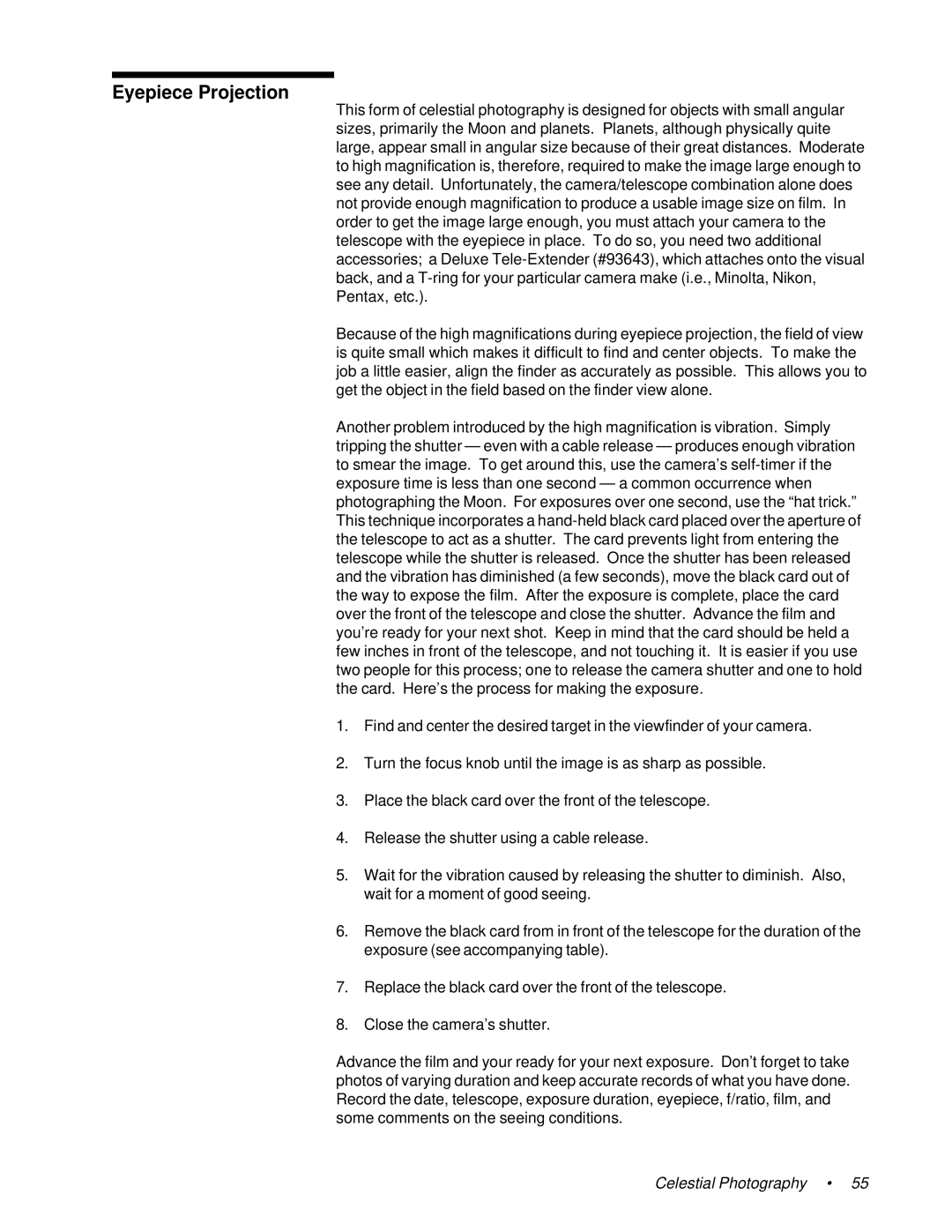Eyepiece Projection
This form of celestial photography is designed for objects with small angular sizes, primarily the Moon and planets. Planets, although physically quite large, appear small in angular size because of their great distances. Moderate to high magnification is, therefore, required to make the image large enough to see any detail. Unfortunately, the camera/telescope combination alone does not provide enough magnification to produce a usable image size on film. In order to get the image large enough, you must attach your camera to the telescope with the eyepiece in place. To do so, you need two additional accessories; a Deluxe
Because of the high magnifications during eyepiece projection, the field of view is quite small which makes it difficult to find and center objects. To make the job a little easier, align the finder as accurately as possible. This allows you to get the object in the field based on the finder view alone.
Another problem introduced by the high magnification is vibration. Simply tripping the shutter — even with a cable release — produces enough vibration to smear the image. To get around this, use the camera’s
1.Find and center the desired target in the viewfinder of your camera.
2.Turn the focus knob until the image is as sharp as possible.
3.Place the black card over the front of the telescope.
4.Release the shutter using a cable release.
5.Wait for the vibration caused by releasing the shutter to diminish. Also, wait for a moment of good seeing.
6.Remove the black card from in front of the telescope for the duration of the exposure (see accompanying table).
7.Replace the black card over the front of the telescope.
8.Close the camera’s shutter.
Advance the film and your ready for your next exposure. Don’t forget to take photos of varying duration and keep accurate records of what you have done. Record the date, telescope, exposure duration, eyepiece, f/ratio, film, and some comments on the seeing conditions.
